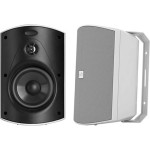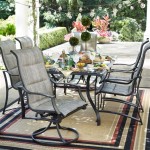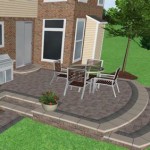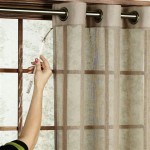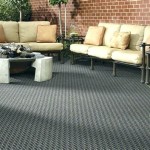Doggie Door For Patio Screen Door: A Comprehensive Guide
Integrating a doggie door into a patio screen door presents a convenient solution for pet owners seeking to provide their canine companions with easy access to the outdoors. This addition allows dogs to enter and exit the house independently, reducing the need for constant human intervention. However, the selection and installation of a doggie door in a screen door involve careful consideration of several factors, including the size and breed of the dog, the type of screen door, and the desired level of security.
The objective of this article is to provide a comprehensive overview of doggie doors for patio screen doors, encompassing the various types available, the installation process, essential considerations before purchase, and common challenges encountered. This information aims to equip readers with the knowledge necessary to make informed decisions and ensure a successful installation.
Types of Doggie Doors for Screen Doors
Doggie doors designed for screen doors are not universally identical. They differ in material, design, and installation mechanisms. Understanding the available types is crucial for selecting the most appropriate option for a particular situation.
1. Standard Flap Doors: This is the most common type of doggie door. It consists of a frame that is installed into the screen and a flexible flap that the dog pushes through to enter or exit. The flap is usually made of vinyl or rubber and is designed to swing closed automatically due to gravity or magnetic closure, preventing insects from entering and keeping the outdoor climate out.
2. Magnetic Flap Doors: These doors are a variation of the standard flap door but incorporate magnetic strips along the edges of the flap and the frame. The magnets provide a tighter seal, further reducing drafts and preventing insects from passing through. While offering superior insulation, the magnetic closure may require the dog to exert slightly more force to open the door, which could be a consideration for smaller or older dogs.
3. Locking Doggie Doors: These doors feature a locking mechanism that allows the owner to restrict access to the doggie door when needed. This is particularly useful for security purposes, such as when the homeowner is away or during periods of inclement weather. The locking mechanism can be a simple slide-in panel or a more complex latching system.
4. Sliding Doggie Doors: These doors are designed to integrate seamlessly with sliding screen doors. They typically consist of a panel that replaces a section of the sliding screen door, incorporating a doggie door within the panel. This option is considered more aesthetically pleasing and secure compared to other types, as it does not require cutting into the existing screen.
5. Panel Insert Doors: These doors also replace a section of the screen door but are typically made of a more durable material like aluminum. The doggie door opening within the panel can then accommodate a standard flap door or a more sophisticated locking system. These are ideal for high-traffic situations or for owners seeking added security and durability.
6. Electronic Doggie Doors: These are the most advanced and expensive type of doggie door. They use a collar-mounted sensor or a microchip implant to detect the dog's presence and automatically unlock the door. This allows only authorized pets to enter and exit, preventing other animals or unwanted intruders from gaining access. Electronic doors offer superior security and control but require more complex installation and maintenance.
Installation Process: A Step-by-Step Guide
Installing a doggie door in a patio screen door can be a straightforward process for those with basic DIY skills. However, meticulous attention to detail is crucial to ensure a secure and functional installation.
1. Measurement and Planning: The initial step involves accurately measuring the dog's height from the ground to its chest or shoulder. This measurement determines the appropriate height for the doggie door opening. It is crucial to select a door size that allows the dog to pass through comfortably without having to crouch excessively. Furthermore, the available space on the screen door should be assessed to ensure that the chosen door size can be accommodated. Consider the frame of the screen door and any obstructions that may interfere with the installation.
2. Marking and Cutting: Once the appropriate location has been determined, the template provided with the doggie door kit should be used to mark the outline on the screen. Ensure that the outline is level and aligned with the frame of the screen door. Using a utility knife or a specialized screen cutting tool, carefully cut along the marked outline. It is advisable to cut slightly inside the line initially and then gradually trim until the opening is the correct size. Precautions should be taken to prevent damage to the surrounding screen material.
3. Frame Installation: With the opening created, the frame of the doggie door can be installed. The frame typically consists of two parts that fit together on either side of the screen. Apply adhesive or sealant to the frame to create a watertight seal and to secure the frame to the screen. Align the frame components carefully and press them firmly together. Use screws or rivets, if provided, to further secure the frame to the screen door. Ensure that the screws are not overtightened, as this could damage the screen or the frame.
4. Flap Installation: Once the frame is securely installed, the flap can be attached. The flap usually attaches to the frame using hinges or a similar mechanism. Ensure that the flap swings freely and closes properly. If the flap is equipped with magnets, check that the magnets align correctly and provide a tight seal. Adjust the flap as necessary to ensure proper functionality.
5. Testing and Adjustments: After the installation is complete, test the doggie door to ensure that it functions correctly. Encourage the dog to use the door and observe its ease of use. Make any necessary adjustments to the flap or the frame to improve functionality. Check for any gaps or leaks around the frame and seal them with caulk or sealant. This is especially important to prevent insects from entering the house.
Key Considerations Before Purchase
Before making a purchase, pet owners should carefully consider several factors to ensure that the selected doggie door meets their specific needs and requirements.
1. Dog Size and Breed: The size and breed of the dog are the most important factors to consider. The doggie door should be large enough for the dog to pass through comfortably without having to crouch excessively. Measure the dog's height and width carefully and select a door size that accommodates these measurements. Also, consider the dog's activity level and potential for growth when selecting the door size. Some breeds are inherently more energetic and may require a larger opening.
2. Security: Security is a paramount concern for many pet owners. Consider the locking mechanisms and security features offered by different doggie doors. If security is a major concern, consider a locking doggie door or an electronic doggie door that only allows authorized pets to enter. Evaluate the strength and durability of the door frame and flap to prevent unauthorized access. Reinforcing the screen door itself may also be necessary to enhance overall security.
3. Energy Efficiency: Doggie doors can potentially compromise the energy efficiency of the home. Select a door with good insulation and a tight seal to prevent drafts and heat loss. Magnetic flap doors are generally more energy-efficient than standard flap doors. Consider the climate in which the home is located and choose a door that is appropriate for the local weather conditions. Insulated flaps and airtight seals can significantly reduce energy consumption.
4. Material and Durability: The material and durability of the doggie door are important factors to consider, especially for high-traffic areas or for dogs that are prone to scratching or chewing. Choose a door made of durable materials such as aluminum or reinforced plastic. Avoid doors made of flimsy materials that are likely to break or wear out quickly. Consider the weather resistance of the materials, especially if the door will be exposed to direct sunlight or rain.
5. Ease of Installation: The ease of installation is another important consideration, especially for those who are not experienced in DIY projects. Choose a door that comes with clear and detailed instructions and all the necessary hardware. Consider the tools required for installation and ensure that they are readily available. If the installation process seems too complex, consider hiring a professional installer.
6. Aesthetics: While functionality is the primary concern, aesthetics should also be considered. Choose a doggie door that complements the style of the home and the screen door. Consider the color and design of the door and how it will blend in with the existing décor. Some doggie doors are designed to be more discreet than others, such as those that are painted to match the color of the screen door frame.
7. Cost: The cost of the doggie door is also an important factor to consider. Doggie doors range in price from relatively inexpensive standard flap doors to more expensive electronic doors. Set a budget before shopping and choose a door that meets the needs without exceeding the budget. Consider the long-term costs associated with the door, such as maintenance and replacement parts.
Common Challenges and Solutions
Despite careful planning and execution, several challenges may arise during or after the installation of a doggie door in a patio screen door.
1. Dog Hesitation: Some dogs may be hesitant to use the doggie door initially. This is particularly common for dogs that are unfamiliar with the concept of a flap door. To encourage the dog to use the door, try enticing it with treats or toys. Hold the flap open initially and allow the dog to walk through. Gradually reduce the amount of assistance provided until the dog is comfortable pushing through the flap on its own. Positive reinforcement and patience are key to overcoming this challenge.
2. Insect Infestation: Even with a well-sealed doggie door, insects may still find their way into the house. To minimize this problem, ensure that the flap seals tightly against the frame. Regularly inspect the seal and replace it if necessary. Consider installing a screen door sweep to further prevent insects from entering. Use insect repellent around the doggie door to deter insects from approaching the opening.
3. Security Concerns: Even with a locking doggie door, there is always a risk of unauthorized entry. To enhance security, consider installing a security camera that monitors the doggie door. Reinforce the screen door with a metal mesh or a security screen. Install motion-activated lights near the doggie door to deter intruders. Consider adding a secondary locking mechanism to the doggie door for added security.
4. Damage to the Screen: The screen around the doggie door can be prone to damage from the dog scratching or pushing against it. To prevent this, reinforce the screen with a metal mesh or a durable screen protector. Trim the dog's nails regularly to reduce the risk of scratching. Consider installing a scratch-resistant barrier around the doggie door to protect the screen.
5. Drafts and Heat Loss: Doggie doors can contribute to drafts and heat loss, especially in cold climates. To minimize this, choose a door with good insulation and a tight seal. Insulate the frame of the doggie door with foam or weather stripping. Consider installing a draft excluder at the bottom of the door. In extreme climates, consider using a temporary cover for the doggie door during the coldest months.
6. Wear and Tear: Over time, the doggie door may experience wear and tear, especially the flap. Regularly inspect the flap for damage and replace it as needed. Clean the doggie door regularly to remove dirt and debris. Lubricate the hinges or other moving parts to ensure smooth operation. Proper maintenance can extend the lifespan of the doggie door and prevent costly repairs.

Screen Doors With Doggie Top In Them

Screen Pet Door Conversion And Replacement Kit

All In One Sliding Screen Door With Built Dog

Dog Door Installed In Custom Built Cedar On Screen Porch

Glass Patio Door For Animals Extreme Temperature Sherbrooke Canin

Free Shipping Hakuna Pets Medium White Mesh Patio Pet Door Suitable For Screen Sliding Doors Dogs Cats Up To 42 Lbs Walmart Com

Invisible Retractable Screens For Doors Phantom

Sliding Patio Screen Door With Pet

Custom Screen Doors 2025 With Pet Door

7 Tips To Pet Proof Your Screened Porch Wallcraft Exterior Solutions



